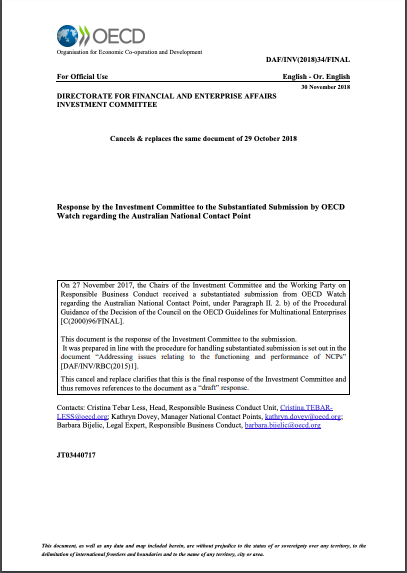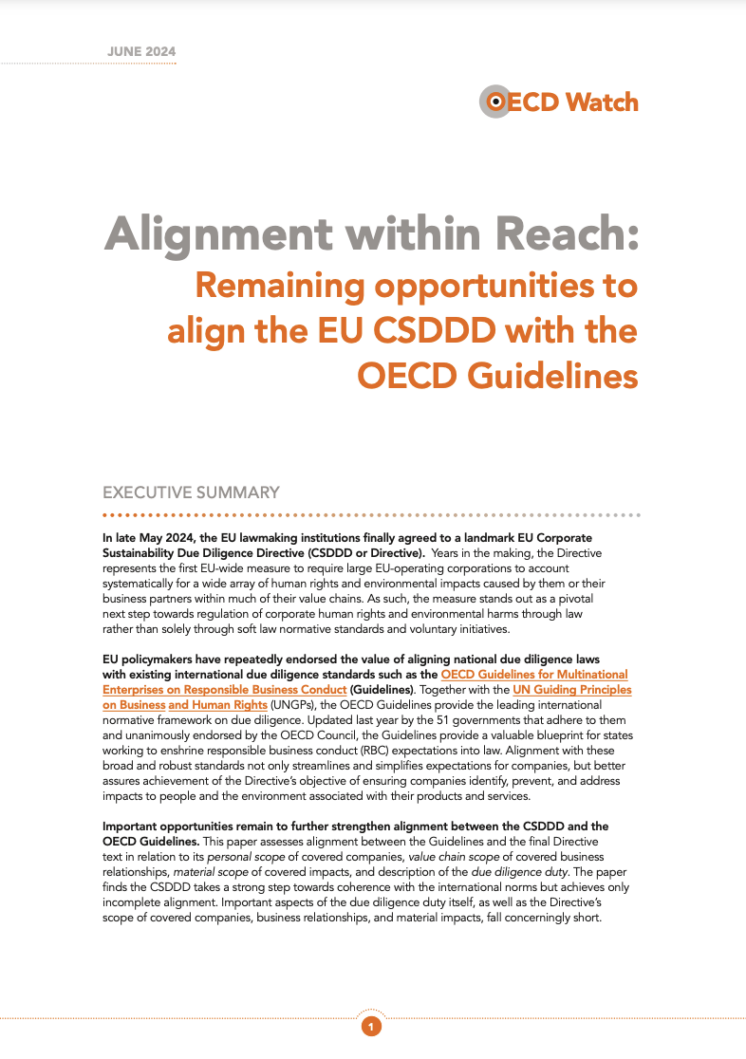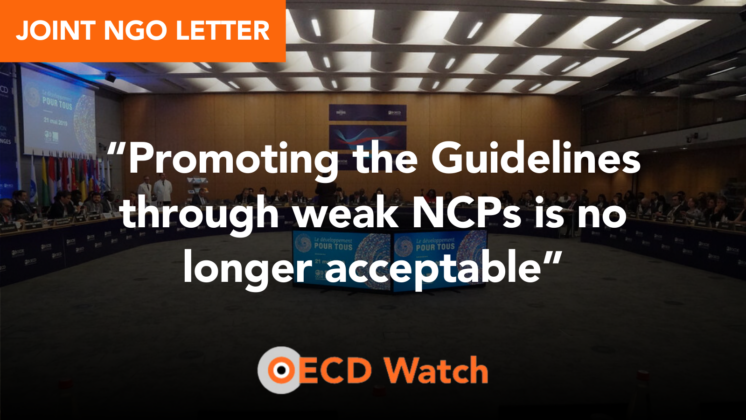OECD formal response to first-ever substantiated submission
In November 2017, OECD Watch filed the first-ever substantiated submission to the OECD Investment
Committee addressing the Australian government’s misapplication, through the Australian NCP, of the OECD Guidelines Procedural Guidance to the specific instance Human Rights Law Centre and RAID v. G4S Australia Ltd. Our submission argued that the NCP had:
1. Failed to meet its own and the Procedural Guidance’s timelines and procedures for
complaint-handling (breaching core criteria of predictability and transparency);
2. Failed to limit itself to the Procedural Guidance’s six admissibility criteria by rejecting the
complaint with reference to broad fears of issuing commentary on government policy and
interfering with parallel proceedings (breaching core criteria of accessibility); and
3. Inappropriately based its decision on information shared only with one party (breaching core criteria of impartiality, equitability, transparency).
Following a one-year review, The Investment Committee issued its formal response in November 2018. The response:
1. Confirms that the Australian NCP failed to follow its own timelines and procedures in the G4S case, and failed to communicate adequately with the complainants during the process;
2. Notes the importance for NCPs to “carefully distinguish the enterprise responsibility to respect human rights and the due diligence requirements that accompany that, from the broader State duty to protect human rights” and not use an enterprise’s links to government policies/agencies as grounds for rejecting a case;
3. Explains that parallel proceedings should not automatically bar complaints; and
4. Observes that “when information is withheld from one party and/or when withheld information is used as the basis of a decision of the ANCP,” that creates “a perception of a lack of impartiality,” which an the ANCP should address by explaining to the relevant party why the
information was sensitive.
The full response is available for download here.
read more less













